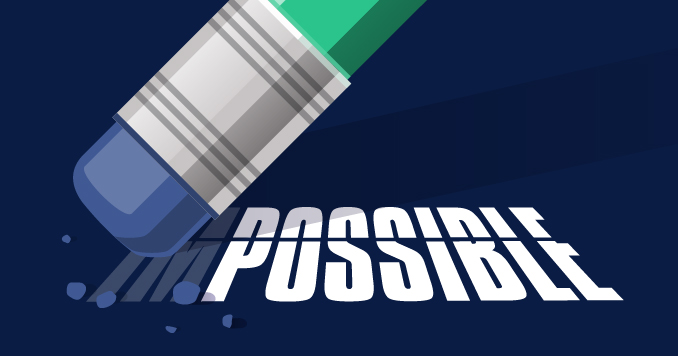“There is not such a cradle of democracy upon the earth as the Free Public Library. A library outranks any other one thing a community can do to benefit its people. It is a never-failing spring in the desert.”
Andrew Carnegie
19th-century industrialist and philanthropist
When we published the first version of this article in 2019, we cited the Economist Intelligence Unit’s Democracy Index, which reported that 2017 was “the worst decline in global democracy in years”. According to the most recent edition of that report, the situation has not exactly improved since then.
In fact, the newest Democracy Index informs us that the global average index score fell to 5.23 last year, down from 5.29 in 2022: "This is in keeping with a general trend of regression and stagnation in recent years, and it marks a new low since the index began in 2006."
The index evaluates a number of indicators in 167 countries under categories including electoral process and pluralism, civil liberties, the functioning of government, political participation and political culture.
It then classifies each country under one of four regimes: full democracy, flawed democracy, hybrid regime and authoritarian regime.
In 2023, only 24 full democracies existed in the world — notably, the United States was not among them.
The U.S. lost its full democracy ranking in 2016 when public trust in its institutions experienced a severe decline. The country's neighbor to the immediate north, Canada, is ranked as a “full democracy” with a score of 8.69. The U.S., however is classified as a “flawed democracy” with a score of 7.85.

The role of media
According to the version of the study we looked at in 2019, regressions manifest themselves in a number of ways. A few include:
-
Decreasing participation in elections and politics
-
Declining trust in institutions
-
The growing influence of unelected, unaccountable institutions and expert bodies
-
Declines in media freedoms and civil liberties
In exploring the role of media in democracy, the report talked about how newspapers, magazines, radio and television continue to be important sources for accessing trusted journalism. But it also noted that the advent of the internet and social media (which should have created “a golden age for free speech”) had its toll on people’s ability to separate fact from fiction.
This reality is being felt around the globe and has led to a number of initiatives that address the growing deficit in media literacy, particularly with today’s youth. The U.S., Canada, the U.K., Europe and Taiwan are all actively working to educate people on the importance of media literacy and its role in a democratic society.
The future of democracy and today’s youth
In an October 2018 report by Project Information Literacy, researchers studied today’s youth’s attitudes towards traditional news media in the US.
Not surprisingly, younger generations found news to be an overwhelming fire hose of headlines, posts, alerts, tweets, visuals and conversations that bombard them on their mobile devices throughout the day.
Most of them are not passive participants when it comes to news consumption, recognizing that it plays a critical role in helping them understand their world, interact socially, engage with learning communities and participate in a democracy. College-age students said they believe that news is necessary in a democracy and recognize that engaging with it requires extra effort — more than just scrolling through a social media feed.
How many are willing to put in that work? According to the 2024 edition of the Reuters Institute Digital News Report global surveys over the past several years have suggested a "growing ambivalence about the news, despite — or perhaps because of — the uncertain and chaotic times in which we live".
Reuters reports that interest in news has actually stabilized or increased in some markets, especially those that are going through or have recently held elections, including the U.S. and Argentina.
The long-term trend, however, is down in every country apart from Finland, with high interest halving in some countries over the last decade (UK 70% in 2015; 38% in 2024). Women and young people make up a significant proportion of that decline.
The challenge of artificial intelligence
One complicating factor in all of this has been the rapid rise, in recent years, of artificial intelligence. The Reuters Institute points out that while news organizations have reported extensively on the development and impact of AI on society, they have also begun to adopt the technologies themselves, for two key reasons:
-
Automating behind-the-scenes processes such as transcription, copy-editing and layout have the potential to reduce costs in a significant way.
-
AI technologies could help to personalize the content itself, making it more appealing for audiences. The report cautions that publishers and news organizations "need to do this without reducing audience trust, which many believe will become an increasingly critical asset in a world of abundant synthetic media".
The role of public libraries in promoting democracy
For over 200 years, in addition to being among the most frequently visited public - service institutions, public libraries have been bastions of democracy. Going beyond offering free, unfettered, and equal access to information, public librarians are staunch advocates for media literacy, continually championing efforts to nurture an informed constituency that will actively participate in the democratic process, regardless of political party affiliation.
Many libraries give out voter registration cards, host all-candidate meetings, promote democracy through public policy and function as polling stations during elections — all essential services in socio-economic development.
But what about those under the legal voting age? Is anything being done to encourage a passion for media literacy in them that will carry through to the ballot box? Quite a bit actually.
Many public libraries are providing critical educational services, teaching community members about media literacy — hosting events and panels, educating people on fact-checking tools and posting critical-thinking tips on public library websites.
Each October, Media Literacy Week events take place in countries around the world, giving public and academic librarians opportunities to access resources to help them in their efforts to educate and promote media literacy in their communities and schools. (Designed for librarians at school libraries, educators and parents, PressReader's own Media Literacy Toolkit is one such tool.)
According to the American Library Association Reader. Voter. Ready. campaign, nearly eight in 10 adults (78%) feel that public libraries help them find trustworthy and reliable information.
As the ALA notes, "Informed voters rely on known and trusted information sources."
In a recent article for INCITE magazine, Zola Maddison, Director of Events and Training at the Australian Library and Information Association, observes that in 2024, more than 4 billion people in at least 64 countries — almost half of the world's population — will have the opportunity to vote in federal elections. For those keeping score, that's more voters than ever before in history.
Maddison writes:
It is critical for library and information workers to have a concrete understanding of the core elements that underpin a thriving democracy as we step into this momentous time in history. With this understanding, library and information workers will be positioned to improve and expand the programs, services and resources that serve to strengthen an open, democratic society and to successfully communicate the purpose and impact of their work to government, civil society and community stakeholders.
Opportunity’s knocking

When we wrote the first version of this article for The Insider, we cited the Edelman Trust Barometer, which trumpeted that trust in mainstream media around the world rose to 64% in 2019. In 2024, however, Edelman assigned a global trust score of 50 to the media, with some of the lowest scores going to countries such as the U.K. (at 33) and the U.S. (at 39).
That same report tells that higher percentages of survey respondents reported that they get most of their information about new technologies and innovations from online search (59%) and social media (51%) than from national media (47%) or local media (39%).
A growing number of global citizens worry about false information or "fake news" being used as a weapon. So it’s no surprise that people not only want, but need, access to credible news and information through reputable publishers like: The Wall Street Journal, Newsweek, The Guardian, Los Angeles Times, The Globe and Mail, El País, The Economist, National Post, Foreign Affairs, Bild, The Independent and Le Figaro, to name just a few.
But how many readers are willing to pay for digital newspapers and magazines? Reuters tells us that it varies from country to country:
As in previous years, our survey shows a significant proportion paying for online news in Norway (40%) and Sweden (31%) and over a fifth in the United States (22%) and Australia (21%), but much lower numbers in Germany (13%), France (11%), Japan (9%), and the UK (8%). There has been very little movement in these top line numbers in the last year.
This is why it’s so important that libraries provide their users with access to trustworthy news sources. The hard truth is that quality content is not free. Someone has to pay for the newspapers, magazines, books and journals patrons need.
Libraries understand that and publishers understand that, so there should be no debate over it, right? Let’s just say, “It’s complicated.”
Most traditional publishers recognize their role as the Fourth Estate and guardian of truth. But, as for-profit companies, they are also obligated to their shareholders — the people who fund journalism. So when those media houses think about offering their digital content to libraries, they worry about two things:
-
Will it cannibalize their existing revenue streams? Why should consumers subscribe to it when they can access it for free (from anywhere) using their library card?
-
Will their publication and related products and services diminish in perceived value because they are assumed to be free?
Meanwhile libraries, whose mandate is to democratize content, worry about their ever-tightening budgets and the escalating costs of other free resources patrons need (e.g. library books and journals).
Public library directors have tough choices to make, of that there is no doubt. But, thankfully, thousands of them strongly believe that a democratic society cannot be built on communities afflicted with media illiteracy. And that a strong democracy is the essential foundation upon which higher education can thrive — where academic research can lead to important discoveries and make fundamental impacts on communities and the planet.
They know that by giving their constituents access to trusted news sources and helping them appreciate their importance, the better off society will be.
If you would like to find out how your public library can support your community with unlimited access to over 7,000 digital newspapers and magazines so they can make more informed decisions for themselves, their families, their community, and their country, let’s talk!










